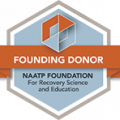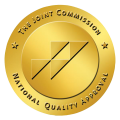Substance abuse is a pervasive issue that affects individuals, families, and communities worldwide. Understanding the various risk factors associated with substance abuse is crucial to developing effective prevention and intervention strategies.
Risk factors for substance abuse can be categorized into individual, familial, social, and environmental elements. Each of these categories may impart a level of risk that could lead a person to misuse substances. Generally, these factors do not act in isolation but rather interact with one another, creating a complex web that contributes to substance use.
What Are Risk Factors for Substance Abuse?
Individual factors often include mental health issues such as clinical depression, anxiety, or trauma, which can drive individuals to seek relief through substance use. A person with a history of trauma may find themselves more susceptible to addiction, as they may use substances as a coping mechanism to escape their emotional pain. Personality traits such as impulsivity or sensation-seeking can further increase the likelihood of engaging in risky behaviors, including substance experimentation and eventual abuse.
Familial factors play a crucial role as well; a family history of substance abuse can create a learned behavior pattern where individuals may normalize or even glorify substance use. Parental supervision and the quality of family relationships can significantly influence a child’s choices. Children who grow up in supportive, communicative households may be less likely to engage in substance use compared to those from dysfunctional families where substance abuse is prevalent. Peer influence in adolescence can also amplify these familial patterns, as friends who use substances can sway an individual’s decisions, further entrenching them in a cycle of substance use.
Genetic and Biological Factors Contributing to Substance Abuse
 Genetic predisposition plays a fundamental role in how individuals respond to substances. Research indicates that genetics can account for approximately 40-60% of the risk for addiction. Certain genes related to neurotransmitter systems (such as those connected to dopamine) are often linked with heightened susceptibility to substance use disorders. Beyond genetics, biological factors such as age, sex, and hormonal influences also contribute to substance abuse risk. Hormonal fluctuations during menstrual cycles can affect mood and cravings, making certain times more challenging for women in recovery.
Genetic predisposition plays a fundamental role in how individuals respond to substances. Research indicates that genetics can account for approximately 40-60% of the risk for addiction. Certain genes related to neurotransmitter systems (such as those connected to dopamine) are often linked with heightened susceptibility to substance use disorders. Beyond genetics, biological factors such as age, sex, and hormonal influences also contribute to substance abuse risk. Hormonal fluctuations during menstrual cycles can affect mood and cravings, making certain times more challenging for women in recovery.
The developing brains of adolescents are particularly vulnerable to the effects of drugs and alcohol. This is partly because the prefrontal cortex (responsible for decision-making and impulse control) is not fully matured until the mid-20s. This developmental window can lead to increased experimentation with substances, often resulting in long-term consequences for those who begin using at a young age.
Environmental factors can interact with these genetic and biological predispositions, creating a multifaceted landscape of risk. For example, individuals raised in environments with high levels of stress, trauma, or substance use may find themselves more susceptible to addiction, even if they possess a genetic resilience. This highlights the imp
The Role of Mental Health in Substance Abuse Risk
Mental health conditions and substance use disorders frequently co-occur. Disorders such as depression, anxiety disorders, and post-traumatic stress disorder (PTSD) can increase the likelihood of substance abuse as individuals may use drugs or alcohol as a form of self-medication.
The relationship between mental health and substance abuse is bidirectional; individuals struggling with substance use may develop mental health issues as a result of their addiction. Addressing both aspects is crucial for effective treatment and recovery.
Research indicates that individuals with untreated mental health disorders are at a significantly higher risk of developing substance use problems. For instance, those suffering from anxiety disorders may turn to alcohol or stimulants to alleviate their symptoms temporarily, leading to a cycle of dependency. This self-medication can provide short-term relief but often exacerbates the underlying mental health condition, creating a complex interplay that complicates recovery efforts.
Many individuals who experience traumatic events may find themselves grappling with both PTSD and substance use disorders. The use of substances may initially appear as a coping mechanism to numb the emotional pain associated with trauma. However, this can lead to a dangerous cycle where the individual becomes increasingly reliant on substances, further impairing their ability to process and heal from their traumatic experiences.
Environmental Risk Factors for Substance Use Disorder
Environmental factors, including family dynamics, community resources, and peer influences, significantly impact substance abuse risk. Families that exhibit patterns of substance abuse, neglect, or lack of support can create an environment where substance use is normalized or enabled. This normalization can lead to a cycle of addiction that is difficult to break, as children raised in such environments may come to view substance use as a coping mechanism or a rite of passage.
- Family History: A family history of addiction increases the risk for subsequent generations.
- Community Resources: Communities lacking in recreational opportunities or educational resources may see higher rates of substance abuse.
- Peer Pressure: Adolescents and young adults are particularly susceptible to peer influence, which can lead to experimentation with drugs or alcohol.
Communities with strong support systems, such as mentorship programs, youth clubs, and accessible mental health services, can mitigate the risks associated with substance abuse. When young individuals have access to positive role models and constructive activities, they are less likely to engage in risky behaviors. Positive peer influences can encourage healthy behaviors, such as participation in volunteer work, which can serve as protective factors against substance abuse.
The Impact of Stress and Trauma on Substance Abuse

Stressful life events or ongoing trauma can prompt individuals to seek relief through substance use. Whether from personal bereavement, relationship issues, or occupational stress, these pressures may lead people to alcohol or drugs as an escape method. These events may include:
Trauma can alter brain structure and function, leading to challenges in emotional regulation, impulse control, and decision-making. This can further compound the risk of substance abuse.
Lower socioeconomic status is a significant factor in determining the risk of substance abuse. Individuals from lower socioeconomic backgrounds often face greater stressors, such as financial instability and limited access to healthcare services.
Limited educational opportunities can hinder awareness of the consequences of substance abuse.
A lack of stable employment can lead to feelings of despair and increased substance use.
Those with inadequate healthcare may not receive the support needed for addiction prevention or treatment.
Trauma can take many forms, and it’s important to know that stress can manifest from many different outlets. To have experienced either does not mean that substance use is guaranteed to be part of someone’s future. It simply means that someone may be at higher risk for substance use and addiction.
Identifying Personal Triggers for Substance Abuse
Recognizing personal triggers is a crucial step in managing the risk of substance abuse. Triggers can include specific situations, emotional states, or social environments that provoke cravings for substances.
Some common triggers include:
- Social gatherings where drugs or alcohol are available
- Emotional distress
- Situations reminiscent of past substance use experiences
- Social isolation
- Hunger or tiredness
By identifying these triggers, individuals can develop more effective coping strategies to avoid situations that may lead to substance use.
Prevention Strategies: Reducing the Risk of Substance Abuse
Implementing effective prevention strategies can significantly mitigate the risk of substance abuse across communities. Approaches may include:
- Education and awareness programs targeting young people and their families
- Support systems that address underlying issues with mental health
- Services aimed to support those in long-term recovery from addiction
- Activities and community events aimed at providing good times without substances
These strategies aim to promote healthy choices and resilience against substance use influences.
What to Do If You’re at Risk for Substance Abuse

If you identify that you are at risk for substance abuse, proactive steps can help. Here are some recommendations:
- Seek professional help through counseling or individual therapy
- Engage in open conversations with supportive friends or family members
- Develop healthy coping mechanisms, such as mindfulness practices
- Seek to maintain healthy habits, including healthy eating and regular exercise
Recognizing the risk of substance use disorder is the first step toward prevention and healing.
Heal From Substance Abuse at Magnolia City Recovery
The journey to recovery is not linear, but with the right resources and support, individuals can rebuild their lives, overcome their struggles, and create a healthier future. Taking the first step towards help can truly make a life-changing difference. By understanding the multifaceted risk factors for substance abuse, individuals and communities can better address this pressing public health issue and work towards effective prevention and recovery strategies.
Magnolia City Recovery offers a range of services tailored to individual needs, including detoxification programs, therapy programs, and aftercare. Call us today to learn more and start your journey to recovery.

















